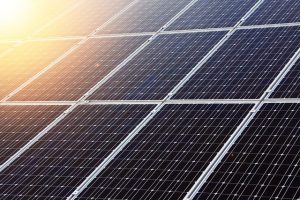Solar Energy has debunked prevalent myths about its efficiency and viability, demonstrating that it can effectively harness ambient light for electricity generation, even under less than ideal conditions like cloudy or rainy weather. Modern solar technologies have significantly evolved to deliver high-efficiency performance across various lighting conditions, and with advancements in energy storage, this clean energy source remains accessible even during non-sunny periods. Scalable solar installations are now capable of meeting large-scale energy demands, while integration into smart grids ensures reliable management of supply and demand. The versatility of solar energy is evident as it proves to be a sustainable option for residential, commercial, and community energy requirements across different climates. Bifacial solar panels represent a breakthrough in capturing energy from multiple angles, further solidifying solar energy's potential as a globally applicable renewable resource.
Solar energy has long been a beacon of sustainable power, yet it is often shrouded in misconceptions that hinder its adoption. This article aims to dispel the common myths surrounding solar energy efficiency and potential, as well as the true costs and savings involved. We will explore how solar panels function across various climates, their performance in cold conditions, and their capability to power homes and businesses effectively. Additionally, we’ll delve into the actual efficiency of modern solar technologies and how atmospheric factors influence their output. Furthermore, understanding the financial aspects of solar energy systems is crucial for a clear picture of investments versus savings, the impact of government incentives, and the economics behind net metering. Let’s shine light on these misconceptions and pave the way for a more informed discussion about harnessing the sun’s power responsibly and cost-effectively.
- Debunking Myths Surrounding Solar Energy Efficiency and Potential
- 1. Misconception about solar energy's performance in different climates
Debunking Myths Surrounding Solar Energy Efficiency and Potential

Solar energy has long been a subject of fascination, yet misconceptions about its efficiency and potential persist. One prevalent myth is that solar panels are inefficient on cloudy or rainy days. In reality, solar energy systems are designed to convert sunlight into electricity, not just direct sunlight but ambient light as well. This means that they continue to generate power even when the sun isn’t fully visible, albeit at a reduced capacity. The efficiency of solar panels is measured by their ability to capture photons from the sun’s spectrum and convert them into usable energy. Modern solar technologies have made significant strides in this regard, with some systems boasting high-efficiency ratings that enable them to perform well under various lighting conditions.
Furthermore, another misconception is that solar power cannot be a major source of energy for large populations or industries due to its intermittent nature. However, the potential of solar energy is far more substantial than this belief suggests. Solar installations can be scaled up to meet significant energy demands, and with advancements in energy storage technologies, solar energy can be harnessed and stored for use when sunlight is not available. Additionally, the integration of solar power into the existing energy grid is facilitated by smart grid technologies, which help balance supply and demand and ensure a consistent and reliable energy supply. The potential of solar energy to contribute to the world’s energy mix is immense, with the capacity to power homes, businesses, and even entire communities in a sustainable manner.
1. Misconception about solar energy's performance in different climates

Solar energy has long been associated with sunny, arid regions, where its performance is undeniably optimal. However, a common misconception persists that solar panels are ineffective in less sun-drenched climates. In reality, solar technology has advanced significantly to harness sunlight efficiently across a wide range of environmental conditions. Photovoltaic cells convert light into electricity, and while they perform best under direct sunlight, they can still generate power from diffuse or indirect sunlight, such as that found on cloudy or overcast days. Additionally, innovative bifacial solar panels are designed to capture sunlight from both sides, maximizing energy production regardless of the climate. Therefore, solar energy is a viable option for many regions, including those with moderate sunlight exposure, thanks to these technological advancements and adaptations.
In conclusion, solar energy stands as a robust and versatile power source that defies many of the common misconceptions surrounding its efficiency and potential. Contrary to beliefs that its effectiveness is limited to sunny climates, solar panels can harness energy even under cloudy skies or during less intense sunlight hours. This debunks the notion that their performance significantly diminishes outside of areas with consistently high sunlight levels. As the technology continues to advance and become more accessible, solar energy’s role in our energy mix is set to expand, offering a cleaner and more sustainable alternative to fossil fuels. It’s clear that solar energy is not just a viable option for generating electricity but an increasingly practical choice for powering a wide array of applications, from residential homes to large-scale industrial operations. Embracing the full potential of solar energy will be key in our transition towards a greener and more resilient energy future.
